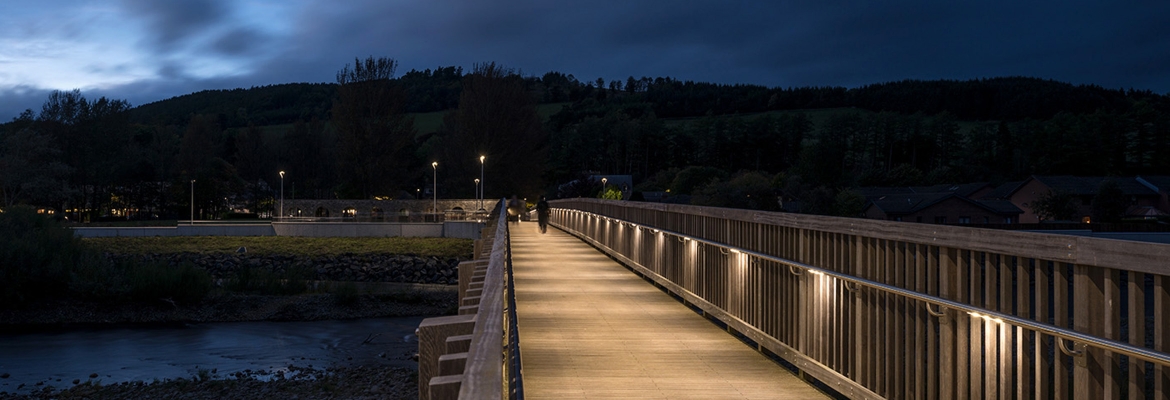You have no items in your cart. Want to get some nice things?
Go shoppingJames Franco adapts the ‘unfilmable’ William Faulkner modern classic for the big screen
William Faulkner’s modernist slice of American literature, As I Lay Dying is such a verbal tour-de-force that it seems mad to even think of making it into a film. But James Franco has not only written and directed the first film adaptation of Faulkner’s southern gothic masterpiece but stars in it as well. And this is the major flaw at its heart: Franco’s decision to cast himself as Darl Bundren.
Darl is one of five children born to the violent matriarch Addie Bundren, whose act of dying gives the book its title. His voice in the novel is the most objective of the fifteen voices, and his observations come closest to being those of a narrator. Darl’s role is clearly the obvious choice for Franco, and yet all the way through the film I was longing for the Will Oldham of John Sayles’s Matewan or the Paul Dano of Meek’s Cutoff. The part needs a timeless, poetic hero, not the youthful face of Gucci.
Despite Franco’s affected and self-conscious performance, the rest of the cast bring a low-key intensity to their roles. Particularly Logan Marshall-Green as the aggressive, violent Jewel and Brady Permenter who is incredibly touching as the young Vardaman. Tim Blake Nelson as the widower Anse, who stands by Addie’s wishes to be buried forty miles from the family home, carries off the patriarch role well. With his hump and prosthetic mouth, Nelson plays the part as straight-up tragedy.
This brings me onto a second, although smaller flaw: Franco’s decision to strip out any element of farce. The tragedies of Biblical proportion faced by the blighted Bundrens as they set out to bury Addie — floods, fire, rape and amputations — are all rendered faithfully, and yet this worthiness turns the film into a somewhat po-faced piece of cultural product. In the hands of say, the Coen Brothers, the black humour of the book would have been celebrated and would have injected more life into the film. Franco is being too respectful and perhaps feels hamstrung by tackling such a Great Modern Classic.
These problems aside, Franco does bring intelligence to this project. There is confidence in the direction and a visual consistency in the earthy tones, the claustrophobia, the dirt. The lushness of the Mississippi landscape is beautifully filmed by Christina Volos, while Kim O’Keefe’s electronic score veers between moody atonal noise and more conventional ‘film music’ lyricism. The latter creates the emotional response it is after, but is perhaps a touch obvious at times.
You cannot talk about this film without tackling Franco’s use of the split-screen, slow-motion and actors speaking directly to the camera — formal devices which attempt to capture filmically what Faulkner addresses with his multiple points of view and fragmented prose. All of these devices work towards dissolving any idea that a story must be told chronologically, as they remove us from a straightforward telling of events, and this feels true to the spirit of the text. However they are too superficial to get inside the characters’ minds, and therefore don’t come close to capturing Faulkner’s multiple interiorities, such inner worlds that perhaps film as a medium would struggle ever to replicate. If there were ever a book one could call ‘unfilmable’ it would be As I Lay Dying with its insistence on the use of words and language as a medium for both hiding and revealing meaning and truth whilst simultaneously spinning a great, universal story.
I wondered while watching As I Lay Dying whether Franco made this film to show the world he could do something on a monumental scale, or to see for himself whether it was possible. Perhaps he was politically motivated. Making a depression-era film in this new age of austerity, could be seen as a cynical bid for popularity or a more genuine desire to give voice to the growing number of dispossessed who are rarely given screen time in Hollywood. Whatever his reasons, he has contributed a solid piece of work, with a few flaws and one big tragedy at its core which, like Anse Bundgren’s, is the result of stubbornness, greed and folly.

About Joanna Pocock
Joanna Pocock graduated with distinction from the Creative Writing MA at Bath Spa University. She is a contributing travel writer for The LA Times, and has had work published in The Nation, Orion, JSTOR Daily, Distinctly Montana, the London Sunday Independent, 3:AM, Mslexia, the Dark Mountain blog and Good Housekeeping, among other publications. In 2017 she was shortlisted for the Barry Lopez Creative Non-fiction Prize and in 2018 she won the Fitzcarraldo Editions Essay Prize. 'Surrender', her book about rewilders, nomads and ecosexuals in the American West, will be published by Fitzcarraldo in 2019. She teaches Creative Writing, both fiction and non-fiction, at Central St Martins in London. Some of her writing can be found at: www.joannapocock.blogspot.co.uk and www.missoulabound.worpress.com





